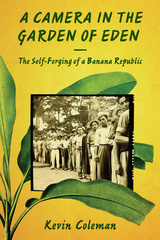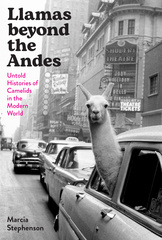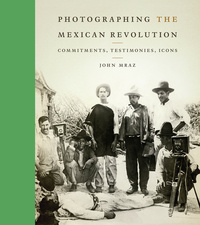
Framing a Lost City
Science, Photography, and the Making of Machu Picchu
When Hiram Bingham, a historian from Yale University, first saw Machu Picchu in 1911, it was a ruin obscured by overgrowth whose terraces were farmed a by few families. A century later, Machu Picchu is a UNESCO world heritage site visited by more than a million tourists annually. This remarkable transformation began with the photographs that accompanied Bingham’s article published in National Geographic magazine, which depicted Machu Picchu as a lost city discovered. Focusing on the practices, technologies, and materializations of Bingham’s three expeditions to Peru (1911, 1912, 1914–1915), this book makes a convincing case that visualization, particularly through the camera, played a decisive role in positioning Machu Picchu as both a scientific discovery and a Peruvian heritage site.
Amy Cox Hall argues that while Bingham’s expeditions relied on the labor, knowledge, and support of Peruvian elites, intellectuals, and peasants, the practice of scientific witnessing, and photography specifically, converted Machu Picchu into a cultural artifact fashioned from a distinct way of seeing. Drawing on science and technology studies, she situates letter writing, artifact collecting, and photography as important expeditionary practices that helped shape the way we understand Machu Picchu today. Cox Hall also demonstrates that the photographic evidence was unstable, and, as images circulated worldwide, the “lost city” took on different meanings, especially in Peru, which came to view the site as one of national patrimony in need of protection from expeditions such as Bingham’s.
Hall's focus on expeditionary photography and her impressive juxtaposition and analysis of archival sources, including photographs, correspondence, photographic circulars, reports, newspapers, and magazines, make Framing a Lost City original and distinct...Framing a Lost City is a welcome and important contribution to the scholarship on photography, nation, and science in Latin America.
The detailed archival work that forms the basis of [Framing a Lost City] is exhaustive and admirable, and this archival complexity is narrated with great clarity. This alone makes Framing a Lost City a substantial contribution to the literature.
[Framing a Lost City] is a welcome addition to recent scholarship that pokes at imperfect understandings that have become orthodoxy…[Cox Hall] casts a critical eye on the nature of scholarship, discovery and science as it was practiced by US academics a century ago. [Cox Hall's] meticulous investigation of archival sources allows her to recreate the conditions of a grand project's genesis, execution, and conclusions.
[Framing a Lost City provides] valuable insights into some of the tensions between local, national and transnational actors that have shaped how [Machu Picchu] is portrayed and marketed today and the effects that this has had on the wider economic and cultural situation and self-definition of Cusco.
Engaging...Theoretically sophisticated, the book builds on the work of scholars such as Jorge Coronado and Deborah Poole that scrutinizes the way the Andes and its people have been imagined...Photographic images, the focus of Cox Hall’s well-researched work, played a significant role in shaping Machu Picchu as a lost city waiting to be found.
The value of Framing a Lost City lies in its examination of the creation of the brand that is Machu Picchu, and the persistence of that brand as a cultural icon... As Hall notes in the concluding chapter, Machu Picchu, through the lens of photography, remains the great lost city it never was.
The archives of the Yale and National Geographic expeditions to Machu Picchu and Peru are a largely untapped treasure chest for the history of science, anthropology, and US–Latin American relations. Amy Cox Hall pulls open the lid, showing how the explorer Hiram Bingham used letters, cameras, and calipers to ‘develop’ the Machu Picchu that tourists buy on postcards today.
This is one of those rare books that should be read and appreciated by scholars, students, and a broadly curious public alike—all who are interested in the part played by science in fashioning Peru’s monumental heritage site, Machu Picchu. Amy Cox Hall’s rendering of this powerful narrative is in itself a marvel of first-rate storytelling.
Amy Cox Hall is a visiting assistant professor of anthropology at Amherst College and a research associate at the Five College Women’s Studies Research Center.
- List of Illustrations
- Acknowledgments
- A Note on the Text
- Introduction: Seeing Science
- Sight
- Chapter 1: Epistolary Science
- Chapter 2: Huaquero Vision
- Circulation
- Chapter 3: Latin America as Laboratory
- Chapter 4: Discovery Aesthetics
- Chapter 5: Picturing the Miserable Indian for Science
- Contests
- Chapter 6: The Politics of Seeing
- Conclusion: Artifact
- Notes
- Reference List
- Index









